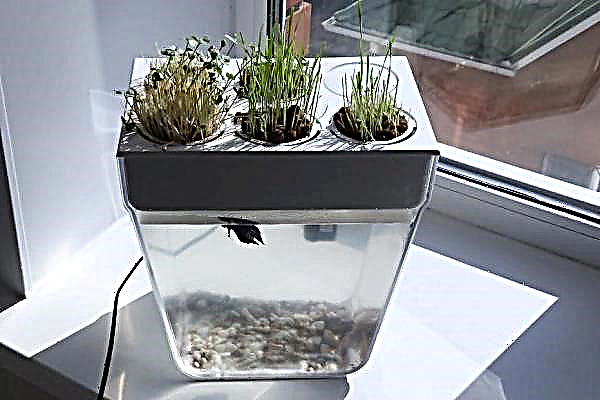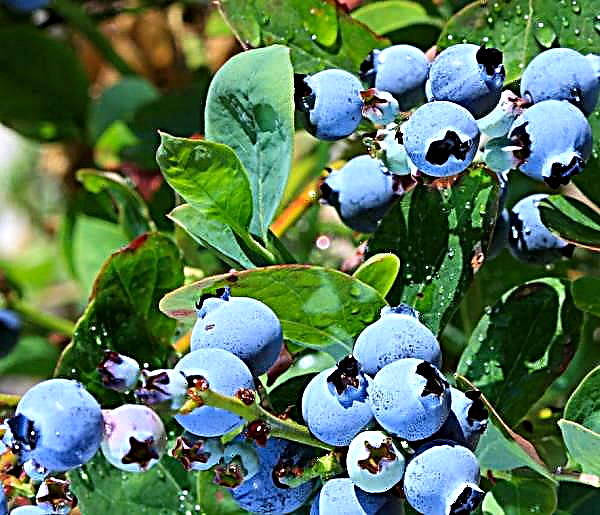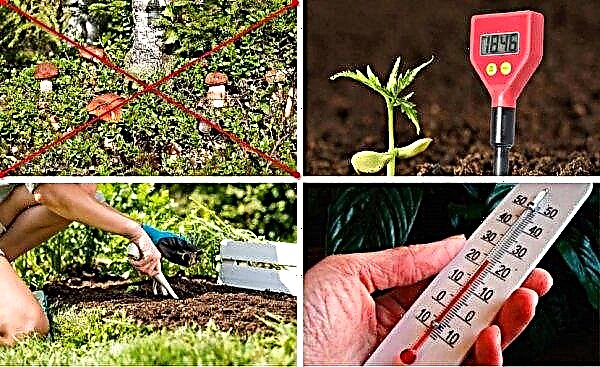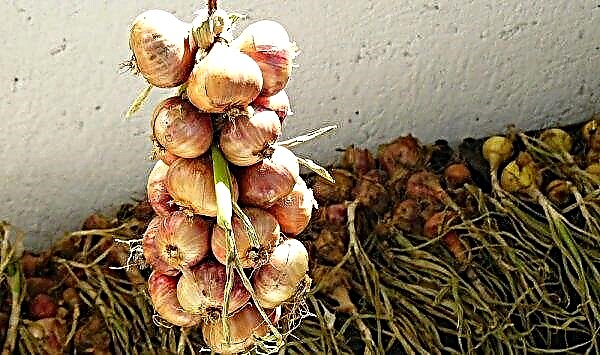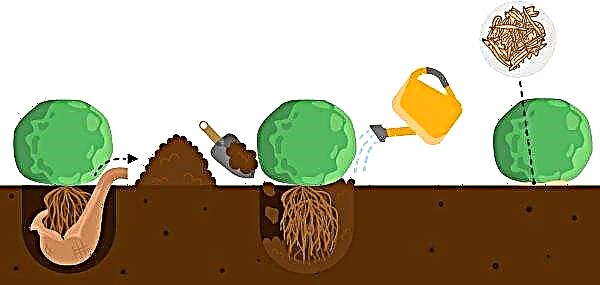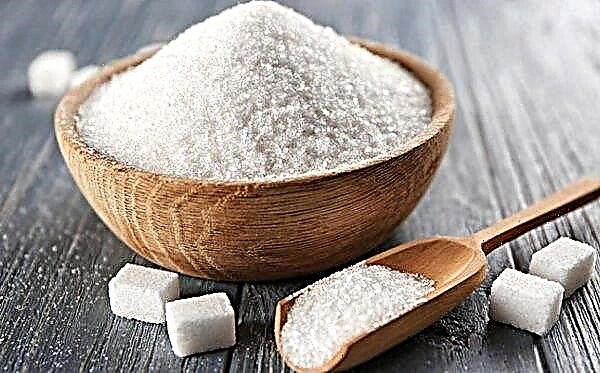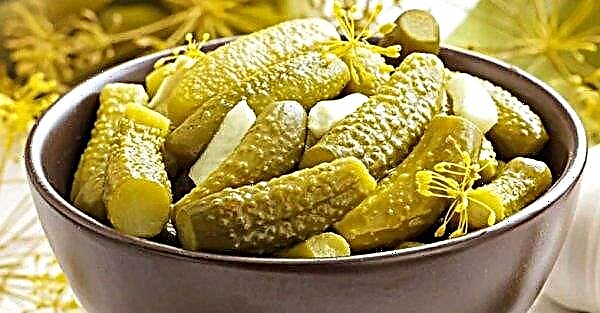Apricot Sardonyx - a high-yielding variety, which can grow in conditions of low temperatures and prolonged winters. The article describes its detailed characteristics, as well as the basics of agricultural techniques for growing a tree on its site.
History of Variety Breeding
The variety was obtained by crossing the trees Champion of the North and Amber. Selection work was aimed at fixing the sign of frost resistance not only of wood, but also of inflorescences. At the same time, it was important to maintain a high yield of parental forms.
Characterization and description of the variety
Externally, the tree is medium-sized, up to 3 m in height, with a thick and spreading spherical crown. The bark is thick, brown. Large foliage with a carved edge. Frost resistance is good: trees tolerate temperatures up to –33 ° C. As for flower buds, they are not afraid of frosts down to –2 ° С. The tree enters fruiting at the age of 4-5 years. The fruits are sung in mid-August.
Apricot shape egg-shaped, slightly flattened, weight - up to 52 g. They are covered with a dense yellow peel with a slight blush. The pulp is the same color, has a delicate structure, the bone separates easily. The taste is sweet-sour with a pleasant light aroma.
Important! The self-pollination of the Sardonyx variety is partial, so it is necessary to plant pollinating trees in the garden: Champion of the North, Amber, Michurinsky Best.
Features of planting apricot
The variety is classified as undemanding in relation to the growing conditions. Loose and fertile soil is ideal for planting it. It is important to choose a site with a deep occurrence of groundwater - at the level of 3-4 m, since the apricot does not tolerate waterlogged soil.
The choice of seedlings for planting
In order for the tree to quickly take root, it is necessary to carefully examine it at the time of purchase.
Did you know? The use of apricots increases the level of hemoglobin in the blood.
First of all, you should pay attention to such factors:
- Root neck condition. Above the rhizome there should be a slight bend with a round healed wound - a place after a cut rootstock.
- The appearance of the stem. In a healthy seedling, it is even and smooth, without any damage and signs of fungal damage.
- Rhizome. Small branches should be lush and dense, and the root itself is well developed, without damage.
- Terms of sale. In order to protect the root system from drying out and dying, it is wrapped with a damp cloth, covered with moistened sawdust, etc.
- Tree age. Young plants, up to 2 years old, are best rooted.
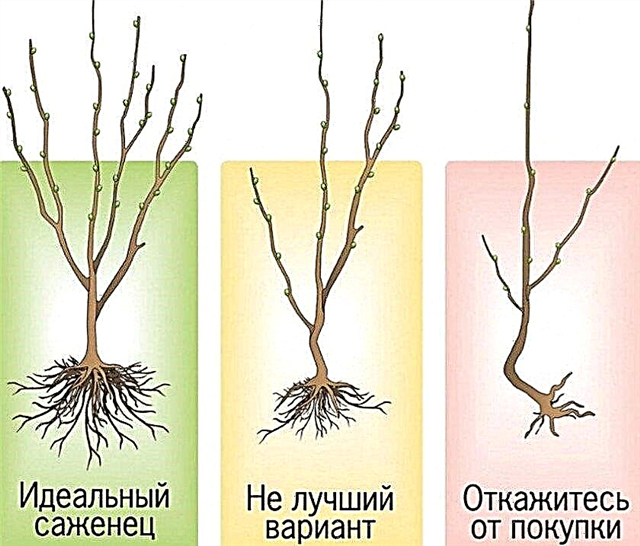
Preparing planting material
Planting is carried out in the spring - before the buds open, or in the fall - 4 weeks before the onset of frost. A landing pit is prepared in advance so that the soil donkeys to the desired level: This will take several weeks. An apricot seedling needs a pit measuring 70 × 80 cm and a depth of 60 cm. A drainage is placed at its bottom - brick fight or crushed stone.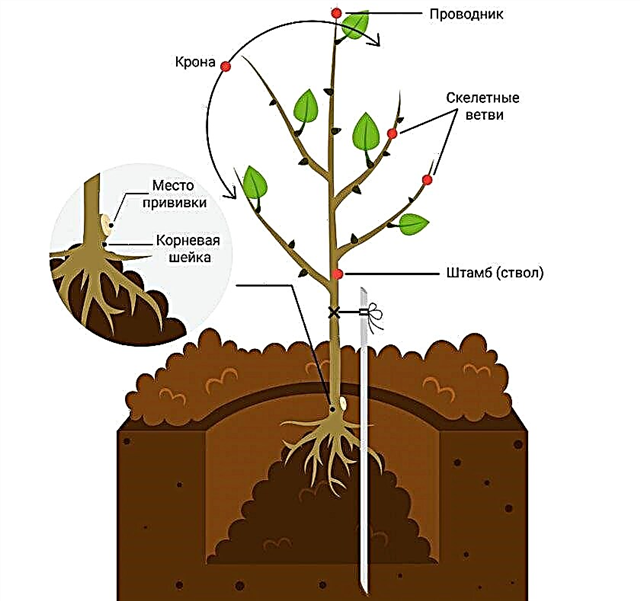
Then fall asleep a nutrient mixture, which includes:
- 3 parts of humus;
- 1 part superphosphate;
- 0.5 parts of potassium chloride.
After this, an embankment is formed from the excavated soil, which will protect the roots from a chemical burn.
Important! At least 3 m² of land is allocated for one apricot tree.
Before planting, the seedling is inspected for damaged and dead roots, which must be removed using a pruner. The base of the barrel is wiped with a damp cloth.
To process the root system, prepare the following solution:
- 1 part clay;
- 2 parts of mullein;
- 5 parts of water.
Rhizome is dipped into it immediately before planting. The procedure nourishes the tree, and also accelerates the process of its adaptation.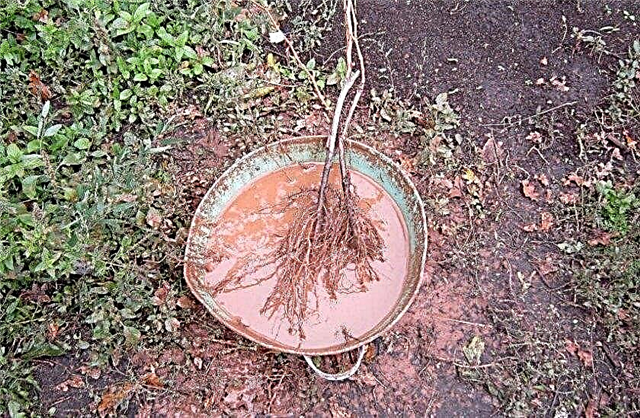
Direct landing
Having completed all the preparatory work, proceed to the landing itself, which is carried out according to the following scheme:
- Planting material is placed in a hole and spread the roots. The root neck should be 3 cm above ground level.
- On the south side establish a support - a wooden stake.
- The pit is covered with earth, slightly tamping it.
- Water the seedling using about 2-3 buckets of water.
- Barrel circle sprinkled with sawdust.
- The tree is tied to a support.
Video: Apricot Planting Instructions
Features of Sardonyx apricot care
After disembarkation, it is important to comply with the norms of agricultural culture.
Feeding and watering
Watering is recommended in conditions of prolonged drought. Young seedlings must be watered once every 14 days. 2-3 weeks before harvest, irrigation is completely stopped so that the fruits are more sweet and tasty.
Fertilize the culture with both organic and complex mineral fertilizing.
Every autumn, depending on the age of the tree, under each apricot make:
- Up to 2 years - 1.5 buckets of rotted manure, 1 glass of superphosphate, 1.5 tbsp. l potassium chloride.
- From 5 to 6 years - 2.5 buckets of organics, 2 cups of superphosphate, 2.5 tbsp. potassium chloride.
- Over 8 years old - 8 buckets of manure, 4 cups of saltpeter, 9 cups of phosphates, 2.5 cups of potassium salts.

Cropping Methods
From the moment of planting material landing, it is important to take measures to form the crown. This will form a visually attractive crown, avoid shading of neighboring trees, as well as increase productivity. Perform the procedure in the spring, in early April. All diseased and frostbitten areas are removed, then too long branches are shortened.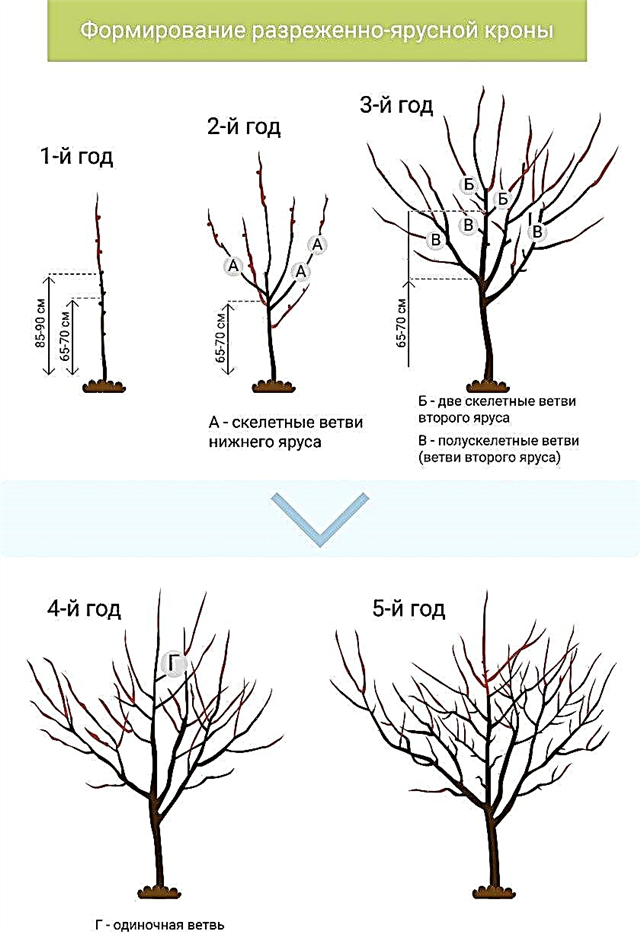 According to the rules of sparse-tier pruning, grow 5-7 branches of the first order with an interval of up to 40 cm. First of all, they shorten the branches located at a distance of 90 cm from the ground. First, two branches are cut in half, located along the main row. Then the rest is cut in a circle, while leaving only the main conductor - 20–25 cm from the top of the main branches. In summer, branches growing at an acute angle, and those that are not basic, are cut.
According to the rules of sparse-tier pruning, grow 5-7 branches of the first order with an interval of up to 40 cm. First of all, they shorten the branches located at a distance of 90 cm from the ground. First, two branches are cut in half, located along the main row. Then the rest is cut in a circle, while leaving only the main conductor - 20–25 cm from the top of the main branches. In summer, branches growing at an acute angle, and those that are not basic, are cut.
Did you know? During drying, apricot fruits practically do not lose their beneficial properties. Dried apricots include vitamins A, B2, B5, B6, PP and C, as well as magnesium, phosphorus, potassium, calcium and essential amino acids.
Diseases and Pests
Apricots are characterized by the following diseases:
- Cytosporosis. A disease of fungal nature, which manifests itself through the formation of small gray-brown tubercles on the cortex. Over time, the foliage on the affected branches withers, and the wood itself dries. For treatment and prevention, a 1% solution of Bordeaux fluid is used, which the plant is sprayed with.

- Bacterial necrosis. The main symptom is burns, which develop into ulcers, oozing gum. At the first signs of an ailment, diseased branches are removed, the sections are treated with a 1% solution of copper sulfate. For prophylactic purposes, they use a 1% solution of Bordeaux fluid - it processes the planting every spring and summer.
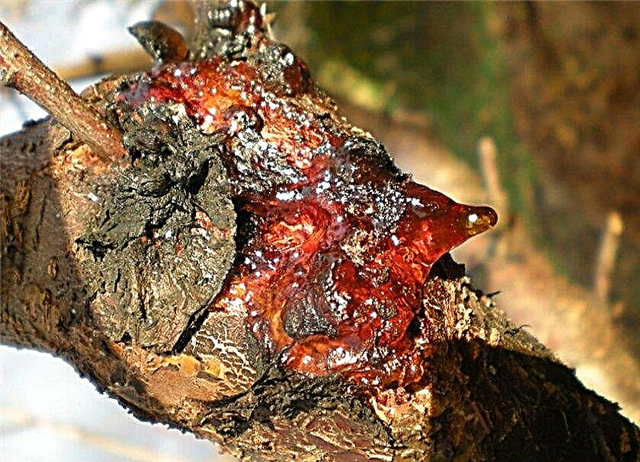
- Kleasterosporiosis. The leaves of infected trees are covered with small brown spots, which after 2 weeks turn into holes, and the fruits are deformed. Affected areas are recommended to be removed and burned. After this, the tree should be treated with a 3% solution of Bordeaux fluid.

The danger also carries a number of insects:
To combat this threat, insecticides are used - for example, 0.2% chlorophos solution or 0.5% Entobacterin solution, which completely spray the planting.Important! Processing is carried out early in the morning, starting from the top of the plant and gradually sinking down, paying particular attention to the back of the foliage.
Harvesting and storage
Harvested when technical ripeness is achieved, when the fruits have acquired the characteristic color of the variety, and the flesh is still dense. Sardonyx apricots are sung in the first half of August. The fruits are removed by hand, carefully separating from the stalk, after which they are placed in a plastic container, and the layers are piled with parchment. 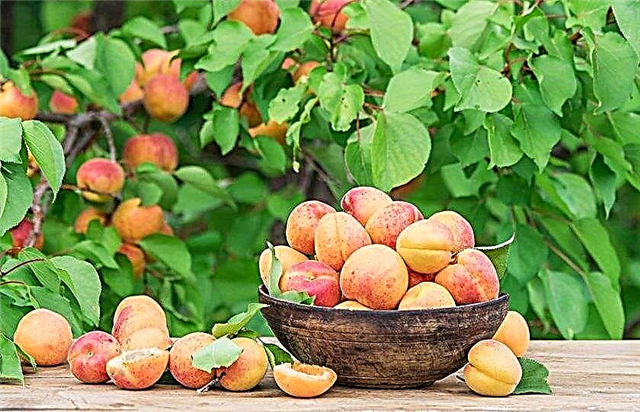
For storage, the containers are transferred to a place with a temperature of +20 ... + 23 ° C, where the fruits can lie for about 2-3 days. To preserve apricots as long as possible, indicators at the level of +10 ... + 15 ° С are necessary. In the refrigerator, the product does not lose its taste for 4 weeks.Today there is a large varietal variety of apricots. They can be grown in different climatic zones, while receiving a rich harvest and high taste qualities of the fruit. By following the above basic rules, you can grow Sardonyx apricot variety on your farmyard.








